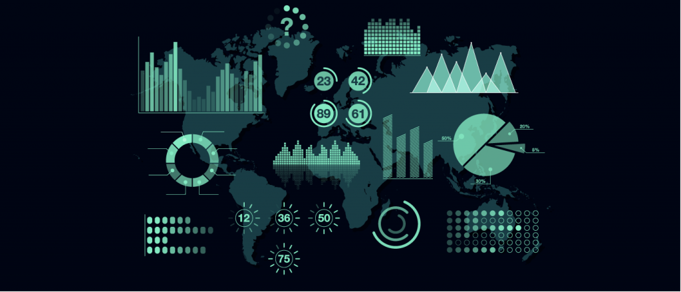
In today’s data-driven world, terms like data science, data analysis, and data visualization are often used interchangeably, but they represent distinct fields with unique roles, required skills, and contributions to the data ecosystem. Understanding these differences is crucial for anyone looking to build a career in data or leverage data for decision-making. This blog provides a detailed comparison of these fields, their roles, required skills, and how they interconnect in the data ecosystem.
What Is Data Science?
Data science is a multidisciplinary field that uses scientific methods, algorithms, and systems to extract knowledge and insights from structured and unstructured data. It encompasses various domains, including statistics, machine learning, data mining, and big data technologies.
Career Pathways for Learning Data Science:-
- Data Scientist: Develops complex models and algorithms to analyze large datasets, identifies patterns, and makes predictions. They work on projects involving machine learning, artificial intelligence, and predictive analytics.
- Machine Learning Engineer: Designs and implements machine learning algorithms and models that can learn from and make predictions on data.
- Big Data Engineer: Manages and optimizes large-scale data processing systems, ensuring efficient storage, retrieval, and processing of big data.
Required Skills To Become A Data Scientist
- Programming Languages: Proficiency in Python, R, and SQL.
- Statistical Analysis: Strong understanding of statistical methods and tools.
- Machine Learning: Knowledge of machine learning algorithms, libraries, and frameworks (e.g., TensorFlow, Scikit-Learn).
- Data Wrangling: Ability to clean, transform, and process large datasets.
- Domain Expertise: Understanding of the specific industry or domain to apply data science effectively.
What is Data Analysis?
Data analysis involves inspecting, cleaning, transforming, and modeling data to discover useful information, draw conclusions, and support decision-making. It focuses on interpreting data to provide actionable insights.
Different roles/jobs you can go for with Data Analyst certification
- Data Analyst: Collects, processes, and performs statistical analysis on data. They generate reports, dashboards, and visualizations to communicate findings to stakeholders.
- Business Analyst: Uses data analysis to inform business decisions and strategy. They bridge the gap between data and business operations.
- Financial Analyst: Analyzes financial data to identify trends, forecast performance, and provide investment recommendations.
Skills to master to become a Data Analyst
- Statistical Tools: Proficiency in Excel, SAS, and other statistical software.
- Data Visualization: Ability to create charts, graphs, and dashboards using tools like Tableau, Power BI, and Matplotlib.
- SQL: Skills to query and manipulate databases.
- Critical Thinking: Strong analytical skills to interpret data and draw meaningful conclusions.
- Communication: Ability to present data findings clearly to non-technical stakeholders.
About Data Visualization
Data visualization is the graphical representation of data and information using visual elements like charts, graphs, and maps. It helps to make complex data more accessible, understandable, and usable by highlighting trends, outliers, and patterns.
The different Careers To Pursue with a Data Visualization background
- Data Visualization Specialist: Designs and creates visual representations of data to communicate insights effectively. They focus on the aesthetic and functional aspects of data presentation.
- BI Developer: Develops business intelligence solutions, including dashboards and reports, to visualize key metrics and support decision-making.
- UI/UX Designer: Works on the user interface and experience design of data visualization tools to ensure they are intuitive and user-friendly.
What are the Required Skills?
- Visualization Tools: Expertise in tools like Tableau, Power BI, D3.js, and ggplot2.
- Design Principles: Understanding of visual design principles and best practices for creating effective visualizations.
- Data Interpretation: Ability to interpret and represent data accurately.
- Programming: Basic programming skills in languages like JavaScript (for D3.js) and Python (for libraries like Matplotlib and Seaborn).
- Storytelling: Skills to craft compelling narratives around data to engage and inform the audience.
How Do The 3 Specializations Interconnect?
- The Data Ecosystem
- Data Collection and Storage: Data engineers and IT professionals gather and store data from various sources in databases or data lakes.
- Data Cleaning and Preparation: Data analysts and data scientists clean and pre-process the data to ensure its quality and usability.
- Data Analysis and Modeling: Data scientists and analysts analyze the data to extract insights, build models, and make predictions.
- Data Visualization and Communication: Data visualization specialists and analysts create visual representations of the data to communicate findings effectively to stakeholders.
2. Collaboration and Synergy
- Interdisciplinary Teams: Successful data projects often involve interdisciplinary teams where data scientists, analysts, and visualization specialists collaborate to achieve common goals.
- Feedback Loops: Continuous feedback between data analysts and data scientists can refine models and improve the accuracy of predictions.
- Unified Insights: Combining robust data analysis with compelling visualizations ensures that insights are not only accurate but also easily understood and actionable by decision-makers.
While data science, data analysis, and data visualization are distinct fields, they are deeply interconnected and complementary. Data scientists focus on developing models and algorithms, data analysts interpret data to generate insights, and data visualization specialists make those insights accessible and understandable. Together, they form a comprehensive approach to leveraging data for informed decision-making and strategic advantage. By understanding the differences and synergies between these roles, individuals and organizations can better navigate the data landscape and harness the full potential of their data assets.
Moringa School offers all 3 courses explore and pursue a short course before the year ends!
Data Analytics with PowerBI & Excel
Data Visualization with Python
Blog written by Elisha Kibet a Moringa Brand Ambassador and avid technical writer passionate about t











